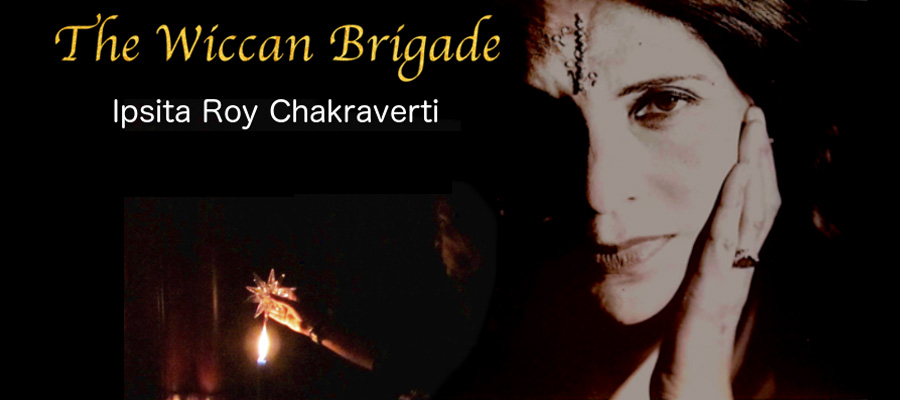


Hailed as: “Goddess of Incantation”, “Mistress of Exorcism”, “Mistress of Snakes” , “Mistress of The Sacred Waters”, “Mistress of Purification”
Pray to her for: Cleansing of self and others, purification of the home and surroundings, dispelling negative atmospheres, awakening the inner power, making chants and spells more powerful and infusing a strong will into wishes.
Invoke her with: A small stone bowl of clear water kept on a fresh green leaf at sunset. The next morning, pour the water into clean earth and put the leave to earth too. If you wish, you may keep the leaf pressed between the pages of a book which is sacred to you.

(Model inspired by terracotta relief from Ur at the Penn Museum, University of Pennsylvania.)
Ningirima was the patron goddess of Girima, most likely a cult centre in the district of Uruk-Kullaba. She was associated with water, fish, snakes and incantations. Her constellation was Scorpio.
The mongoose, commonly found in southern Mesopotamia was associated with Ningilin (Ninkilim). Ningilin may at an early date have been confused with Ningirima, who was invoked in spells to drive away snakes.
Ningirima was one of a triad of goddesses, who were invoked as primary purificatory deities before any important ceremony and without whom the rituals would not begin. The other two goddesses invoked with Ningirima were Nisaba and Kusu.
In the major rituals where a new cult image was installed at a temple and in the creation of its divine aspects, or the mīs pî ‘washing of the mouth’, these goddesses had a vital role. These are the rituals where an image made of wood, perhaps covered with precious metals and gems, is first cleansed of human contamination and then infused with supernatural powers. There are rituals, offerings, incantations, and sacred processions. References are made to the “holy-water-vessel of Kusu and Ningirima”. Nisaba is called “The Opener of the Mouth of the Great Gods”.
Ningirima was both feared and revered. She could control and wield magic. She could also undo dark magic which was sent upon a victim, to cause him bodily harm or befuddle and craze his mind. If someone was acting strange and out of character, she could remove malignant influences which shadowed him. In this way, she was a healer and exorcist in equal parts.
If an adept invoked Ningirima and her magical powers, the dark powers of the goddess would work for him. Incantations, spells and chants would assume potent form with the blessings of Ningirima.
Invocations to Ningirima
Speak these words of invocation from the old days to invoke the power of the goddess:
“May Ningirima make the darkness go away from there!
May Ningirima make the spell go out from the enclosure!”
References
1. Mercer, Samuel A.B. "The Malediction in Cuneiform Inscriptions." Journal of the American Oriental Society 34 (1915)
2. Dhwty. “Nammu: A Forgotten Tale of the Sumerian Mother of Gods.”. Ancient Origins: Reconstructing the story of Humanity’s Past,
3. Hallo, William W. The Book of the People. Providence RI 02912: Brown Judaic Studies, Brown University. 2020.
4. Black, Jeremy. Gods, Demons and Symbols of Ancient Mesopotamia: An Illustrated Dictionary. 2014
6. Price, Ira M. “The Oath in Court Procedures in Early Babylonia and the Old Testament”. Journal of the American Oriental Society 49(1929)
7. Bock, Barbara. The Healing Goddess Gula: Towards an Understanding of Healing Babylonian Medicine. 2014
8. Alvarez-Mon, Javier. The Art of Elam: Routledge
9. Wiseman, D.J. “The Goddess Lama at Ur”. Iraq 22(1-2), ‘Ur in Retrospect: In memory of Sir C. Leonard Woolley’ pp 166-171. 1960
10. De Shong Meador, Betty. “Enheduanna: The First Known Author”. American Translators Association Publication. June 27,2017.
11. Ornan, Talley. “The triumph of the symbol: Pictorial representation of deities in Mesopotamia and the biblical image ban”. University of Zurich, 2005.
12. Koch, Heidemarie. “Theology and Worship in Achaemenid Iran”. Religion and Science, 1995
13. Ford, Michael. Maskim Hul: Babylonian Magick. 2010.
14. Jordan, Michael. Dictionary of Gods and Goddesses. New York: 1993,2004
15. Folz, Richard. Iran in World History. United States of America, 2016
16. Mark, Joshua. “The Myth of Etana”. Ancient History Encyclopedia.
17. Abusch, Tzvi and Karel Van der Toorn. Mesopotamian Magic: Textual, Historical and Interpretative Perspectives.
18. Hurwitz, Siegmund, Lilith, the first Eve: Historical and Psychological Aspects of the Dark Feminine.
19. Koch-Westenholz, Ulla. Mesopotamian Astrology: An Introduction to Babylonian and Assyrian Celestial Division. University of Copenhagen
20. Sjoberg, Ake W. “Hymn to Inanna and Her Self Praise”, Journal of Cuneiform Studies, Volume 40 Number 2.
21. Guterbock, Hans Gustav. “An Addition to the Prayer of Muršili to the Sungoddess and Its Implications”. Anatolian Studies, Volume 30, 1980.
22. Sassmannshausen, Leonard ed. He has Opened Nisaba’s House of Learning:
23. Norrie, Philip. History of Disease in Ancient Times: More Lethal Than War, 2018.
24. Mullo-Weir, C.J. Rev. “Four Hymns to Gula”, Journal of the Royal Asiatic Society, Part 1 – January, 1929
25. Blasweiler, Joost. “The Kalehisar Mountain and the deities of Arinna, the city of the Sun Goddess” Academia.Edu,
26. Scurlock, JoAnn, and Burton R. Andersen. Diagnoses in Assyrian and Babylonian Medicine: Ancient Sources, Translations, and Modern Medical Analyses. University of Illinois
27. Langdon, Stephen Herbert. Sumerian Liturgies and Psalms. United States of America: Library of Alexandria, 1919
28. Gabolde, Marc Dr. “The End of the Amarna Period”, BBC History, February 17, 2011,
29. Houwink, H.J. Ph. “Hittite Royal Prayers”, Brill Online Publication, Volume 16, Issue 1, 1st January, 1969
30. “Ancient Mesopotamian Gods and Goddesses”, Oracc and UK Higher Education Academy,
31. Dassow, Eva Von, Dr. “Contagion and Recovery in the Ancient Hittite Empire”,
32. Mark, Joshua J. “Ancient History Encyclopedia”, Ancient History Encyclopedia.